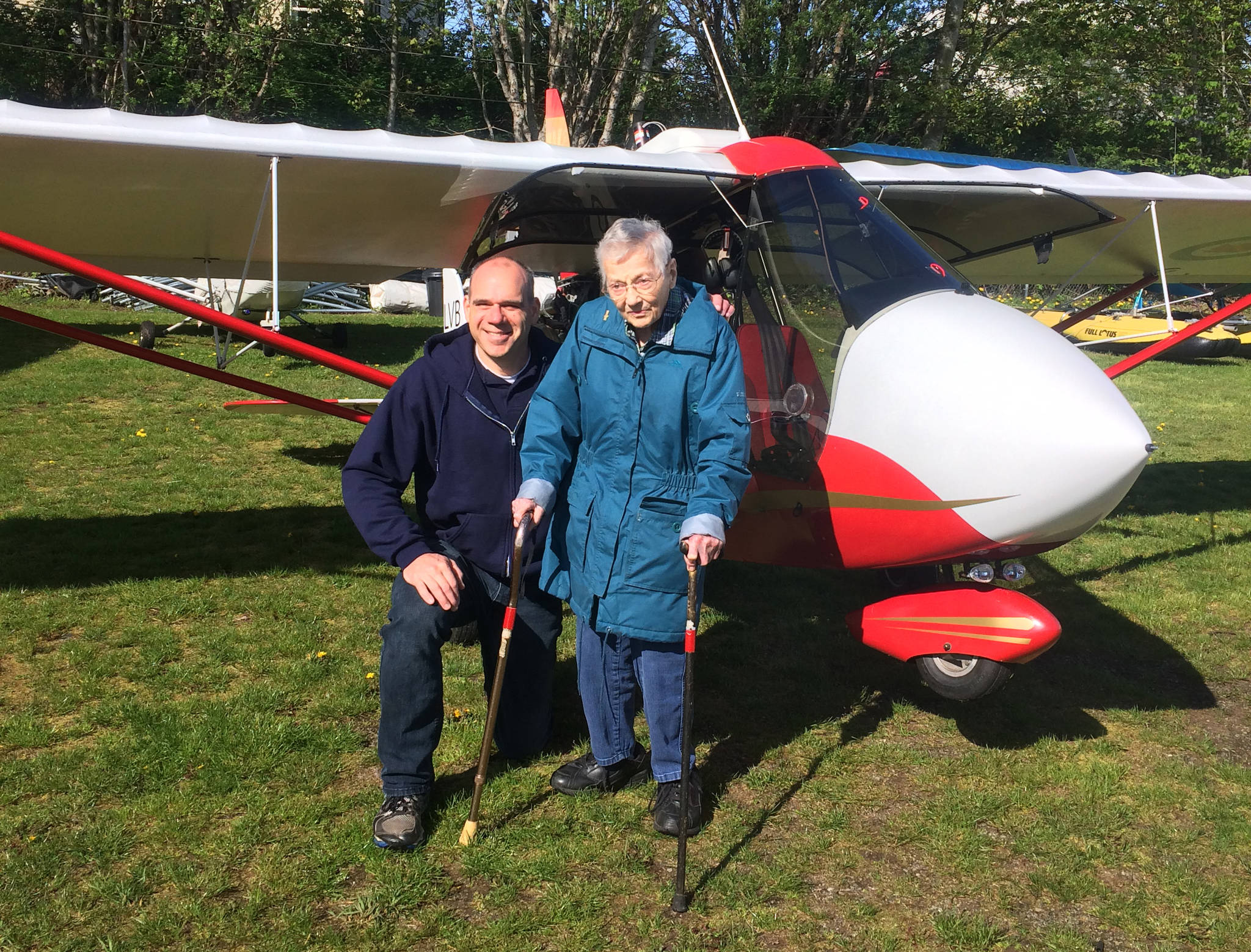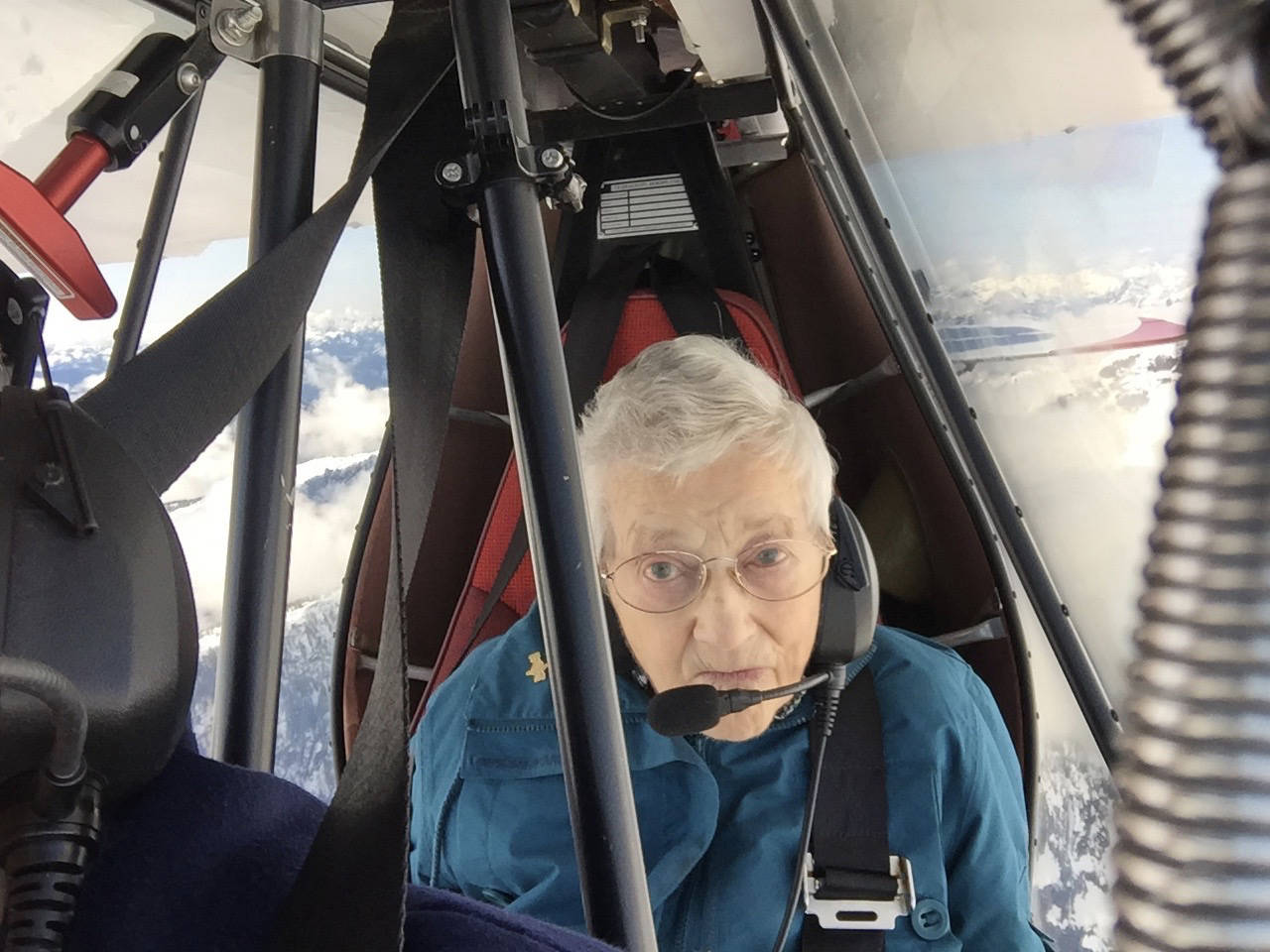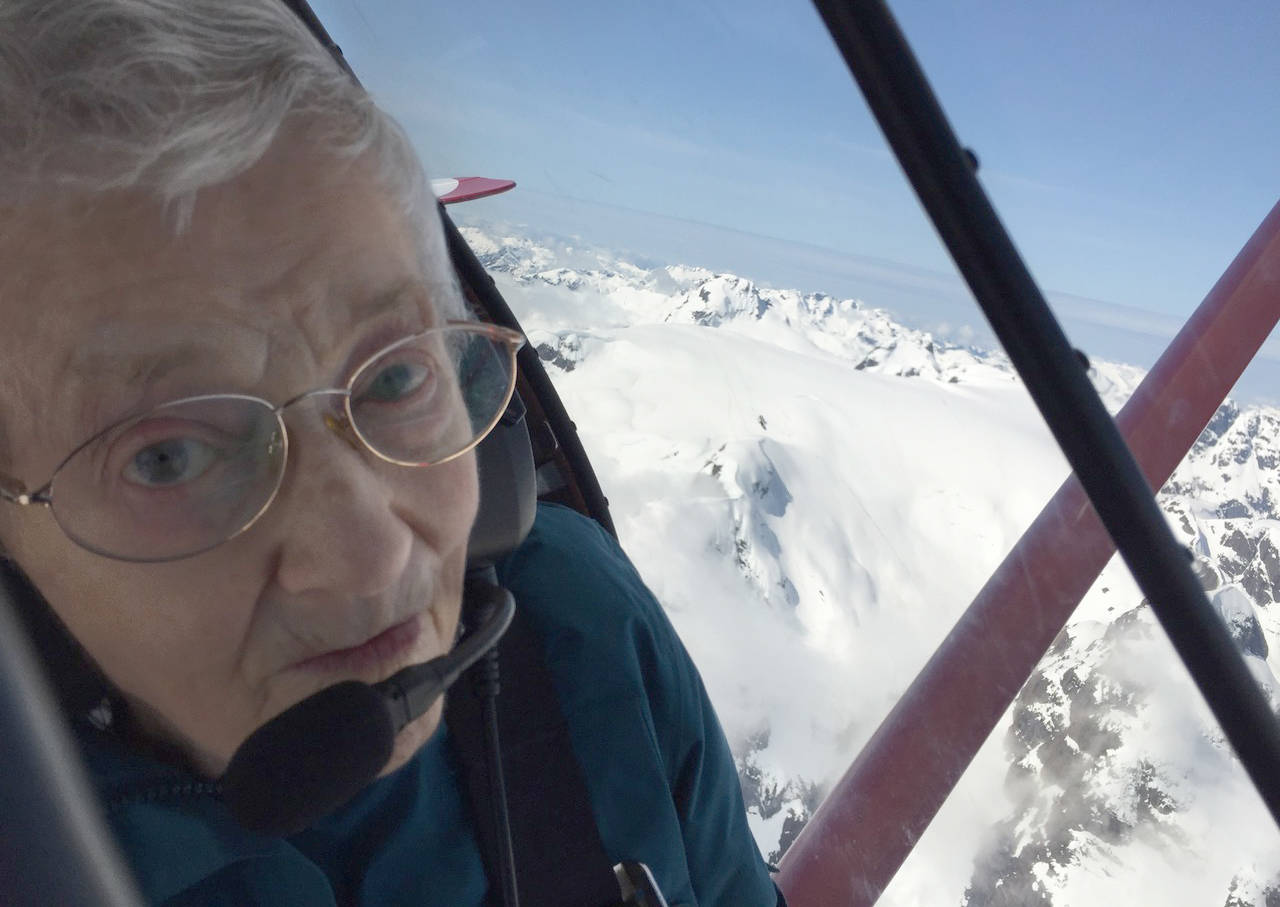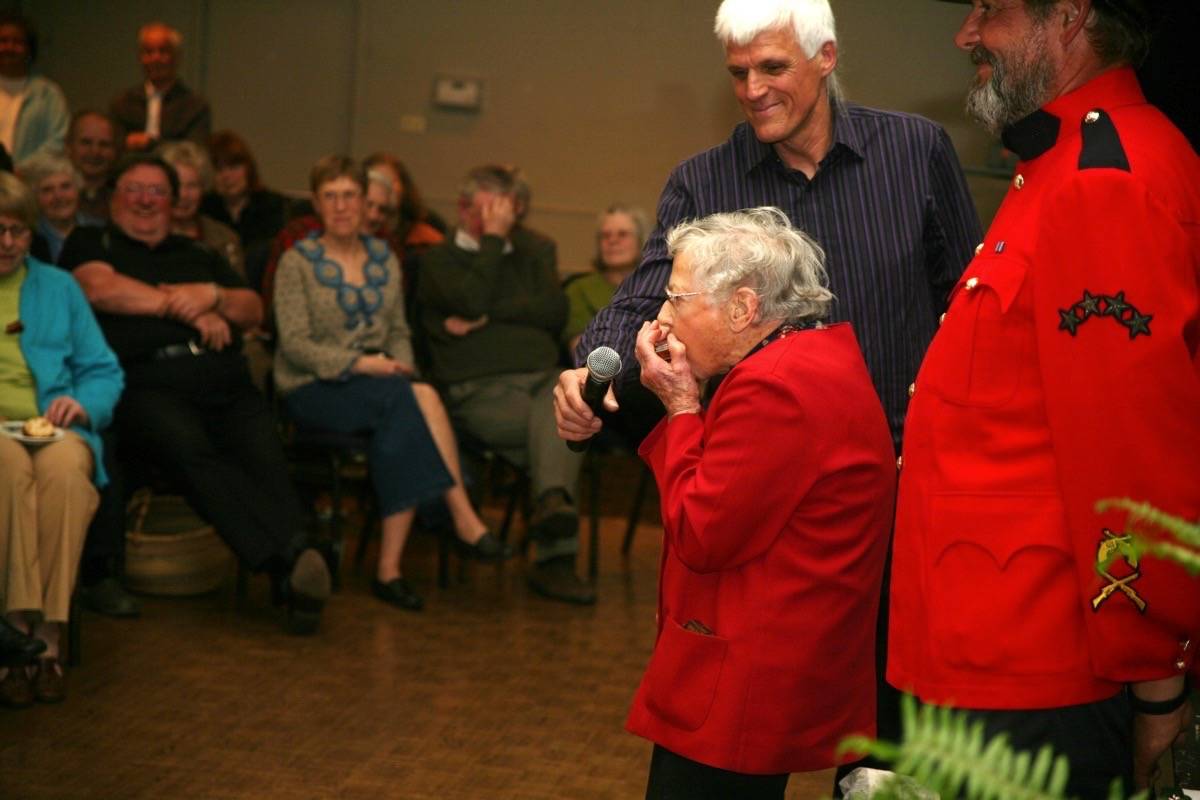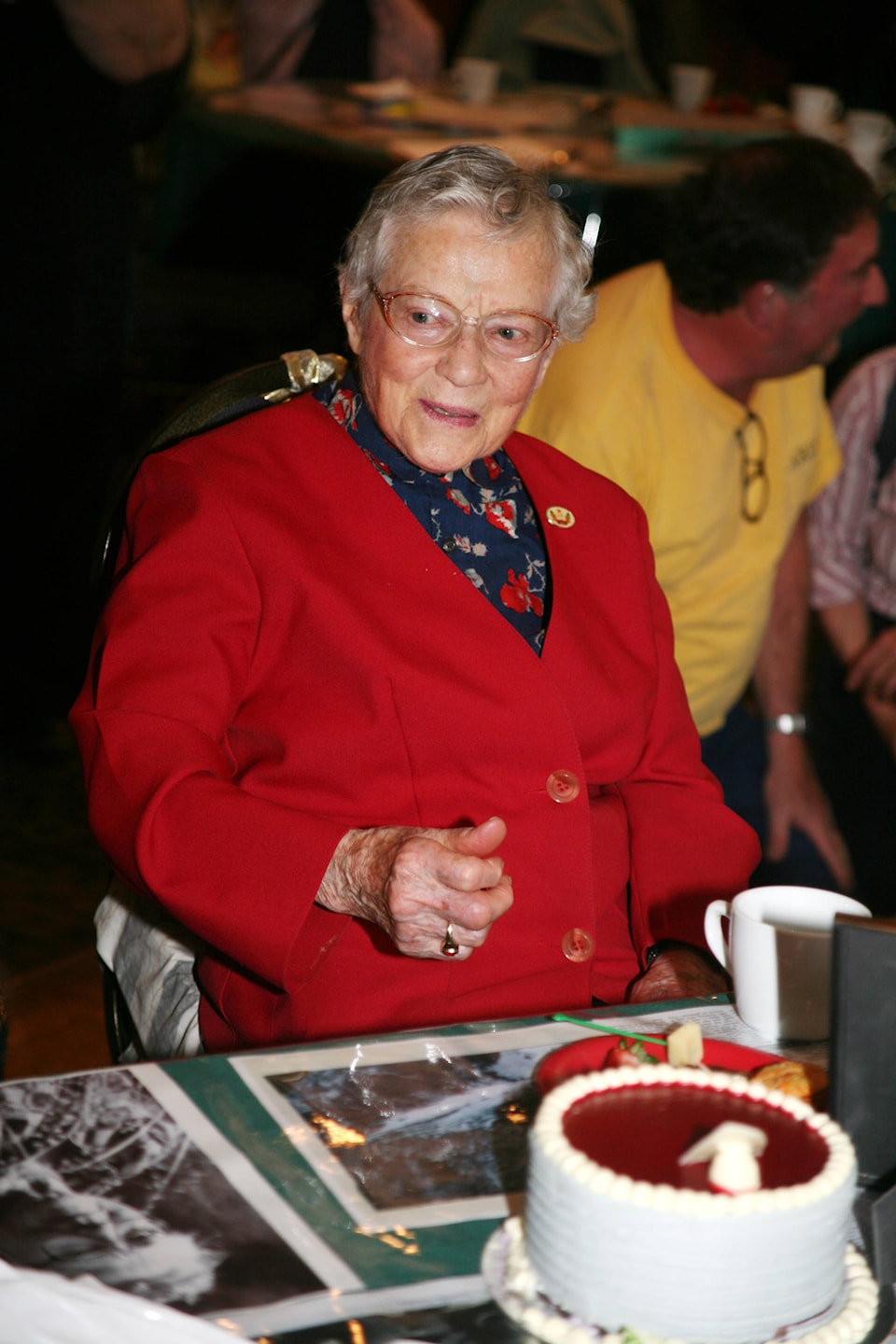Judy Hagen
Special to The Record
Ruth Masters has fought her last battle, been to her last protest.
At age 97 years and six months, she put down her signs and said her last words.
The iconic Vancouver Island activist passed away Tuesday, Nov. 7.
Ruth Masters lived life to the fullest, but on her own terms. She fought to the end, “They took away my licence you know” was the usual rant when I went to visit, then she would say, “Where are you taking me now?”
But it wasn’t up the mountain to protest some indignity to Mother Nature; most recently it was to funerals and reunions, where she would say, “None of my friends are alive any more.”
Gone were fervent protesters like Melda Buchanan, one of the “unclaimed jewels” that was known for her feisty rants against injustice, climbing trees to save eaglets, like Ruth, defying man’s intrusion into the natural world.
Gone was Catherine Capes, her lifelong friend who invited teenage Ruth, poor as a church mouse, to go hiking up local mountains. Dear Catherine, whom Ruth said saved her from slipping into a crevasse when they were hiking on the Comox Glacier.
For several years, Ruth no longer went hiking in the mountains. She was in her own “humble cottage,” still keeping touch with the world. Only last week she promised Erik Eriksson she would support him for mayor. For some who came to visit, she couldn’t always remember who you were, but she was glad to see you.
It was a life well lived.
| Ruth and Andreas Ruttkiewicz, of Airspeed High, pose for a shot before taking off in an ultralite for Ruth's 97th birthday. |
Always a worker
If life gave her lemons, she made lemonade. In the hard days of the Depression, she asked Mrs. Tull if she could take her business course, but pay her when she got a job. Ruth would say, “I was probably one of the few who did pay her later.” Ruth never wanted to be beholden to anyone.
When war was declared, she joined the Canadian Air Force, serving first at Uplands, then in England, where she experienced the horror of war. Before returning home, she went with friends to Australia, where one friend found a husband and stayed. Ruth came home to Courtenay and with her veteran’s loan, built her cabin in the woods, next to her family home. She found work with lawyer Mildred Gordon.
Never one to back down, she made known her anger at how man was destroying the natural world. She was recycling paper and tin cans before anyone coined the phrase, “Reuse. Reduce. Recycle.”
She took up “causes” before they became popular, worked at a variety of tasks that no one else had thought needed to be done. She kept a blanket in the back of her car so that if she saw an animal that was hurt she could pick it up, whether dead or alive, then provide it with either care or a decent burial. When she heard of an oil spill on the West Coast, she drove over to clean up the birds. She would take in the homeless and the needy, and was not always rewarded kindly for her deed.
She started naming lakes in memory of the war dead. For one dear friend when the monument was dedicated she said, “Thanks for the eggs,” for that friend, an old hiking buddy, had once met her in London with real eggs because he had been billeted in a country home! Real eggs: she never forgot that kindness. These weren’t newsworthy acts, just typical Ruth going about thanking those who did not come home to walk the mountains again.
RELATED: Condolences Pour in for Ruth Masters
Wanted to do more
It wasn’t enough though. She wanted to do more for even those she had never known, so she began researching the names on the Sandwick Cairn. She wanted future generations to know something about these men from both the First and Second World Wars. She spent holidays visiting military graves in Europe. She asked the family members to provide photos and memories. She clipped out news items. This was all before the internet, Google, or any easy way to research the information. She typed everything out at lunch hour using the Remington typewriter at the office of Crispin Morris, who took over Mildred Gordon’s practice. Ruth fashioned a leather cover with the words “Lest we Forget” and when the project was finished gave it to the Courtenay Museum.
Renowned protestor
She is remembered for her protests. She never went to jail. She was hated by developers and right-wing politicians, except Stan Hagen, whom she called “His Highness” and educated him on what should be. She convinced him that the boundaries of Strathcona Park should not be changed and he became their champion in Victoria. For this he earned her coveted Hero Spoon Award.
He in turn said, “It is better to be inside the tent instead of outside protesting,” and convinced her to be part of the MILAP project, which vetted funding for fish enhancement projects on the coast. So she was able to cross political lines if she felt it served her purpose.
Kept history alive
She sat on the Courtenay Museum board and was tireless in keeping history alive. She often came to board meetings with artifacts she brought in old dusty boxes or paper bags, dumping them on the table and saying that is all she got from some “old coot” who had just died. She put together three other books: Forbidden Plateau, Courtenay, and Ginger Goodwin, which is in the Cumberland Museum. They were not academic works, but books with all the information she could locate such as news clippings, photos and diaries, so the public would better know about the natural history, the social history and Ginger Goodwin.
She became an icon at protests, but she was much more than just a person who showed up: she put her beliefs into practice, eventually giving her property as a greenway for all to enjoy. On one memorable hot day, a bear came down the river and into town looking for something more to eat. A conservation officer was going to tranquilize the bear. Ruth got wind of it, so, wearing a safety vest, she drove into Courtenay. She said she was afraid the officer might instead hit a little boy because the bear was in the bushes where children played. Well, soon two burly RCMP officers were on hand and lifted her out of the way.
So the headlines and the photos in the newspaper were of little Ruth between two officers, her feet a foot off the ground. In the court of public opinion, Ruth won that round!
Music lover
To those she counted as friends, she would call on the phone to play Happy Birthday on her harmonica. She always had her harmonica in her leather handbag that she had crafted herself. Until only a year ago she would go up to The Views every Wednesday to play for the old folks: a few hymns and a few songs.
She loved to leave something with anyone she met. So she would cut up strips of leather creating bookmarks, and with a felt pen she wrote your name and the date.
One year she was asked to speak at the Chamber of Commerce dinner. She prepared her speech but it was announced she was Citizen of the Year, then, she looked up and said, “OK, can I give my speech now?” and was disappointed that she could not say her piece.
There are many layers to Ruth Masters: environmental activist, generous benefactor of the Ruth Masters Greenway and to a select few, one of the unclaimed jewels, but to all of us, Ruth is a rare gem that has enriched the Comox Valley in her own unique way.
– Ruth Masters, May 7, 1920 - November 7, 2017.
Rest in peace
